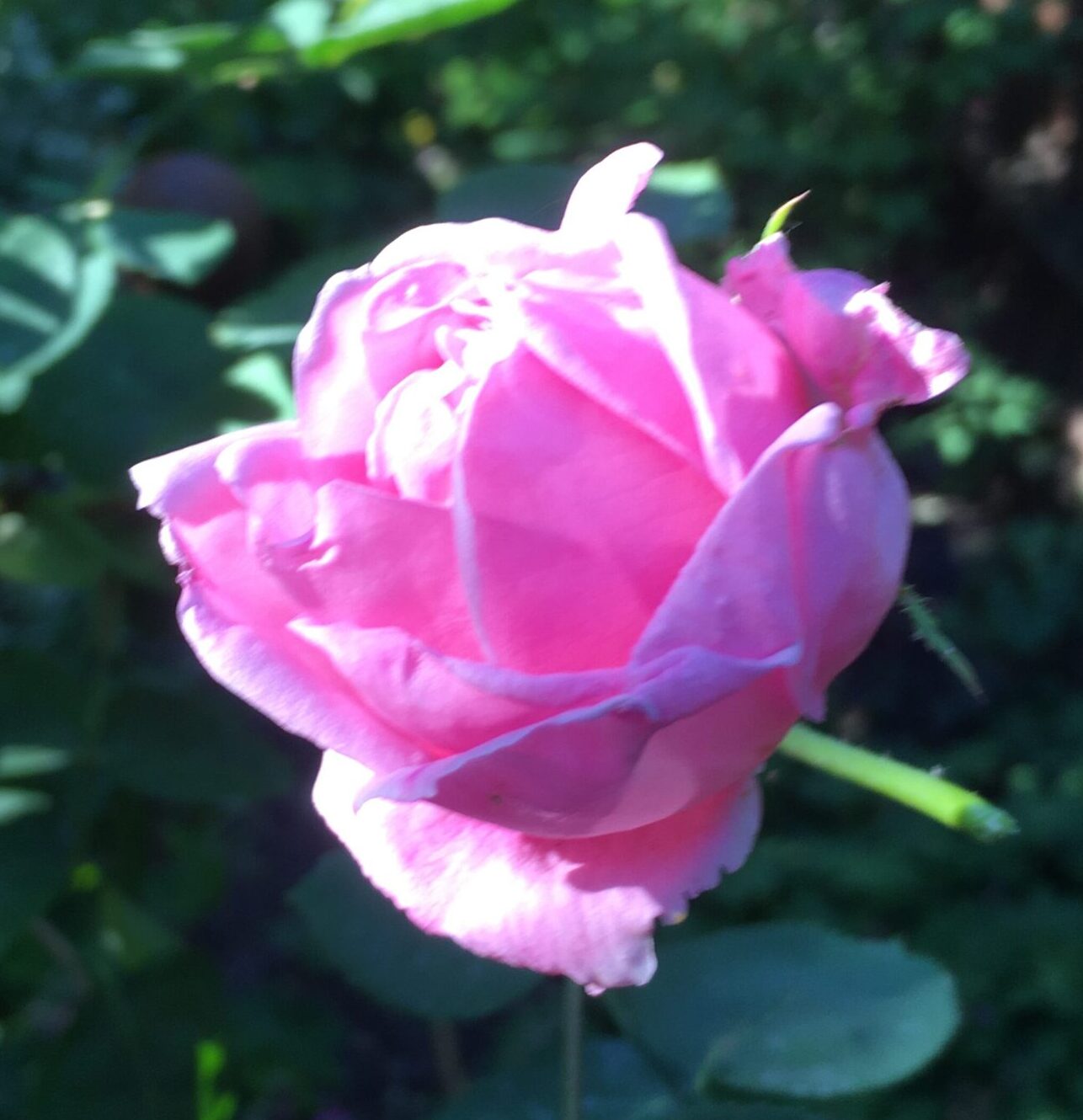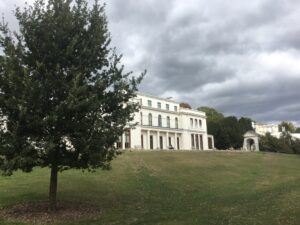As I said in my article on Trewidden Gardens, I had hoped to get to several gardens that can be visited by the public, this Summer. However, the Coronavirus obviously scuppered my best intentions. Therefore, I thought I would write about a garden that I was lucky enough to have a couple of guided tours around – Gunnersbury Park in Hounslow/Acton.
There are two buildings – the small and large mansion. The latter contains a museum of local items covering the local area, including Acton and Hounslow, along with information about the Rothschild family.

The small mansion is somewhat dilapidated, but there are plans to restore it and some work has already begun. However, it is the park that I will briefly discuss here.
The houses and grounds used to be owned by the Rothschild family, in particular, by Lionel de Rothschild during the nineteenth century when he was, by far, the richest man in the World. However, he used to joke that he was a gardener, first and foremost, and only then, a banker. The park itself was landscaped in the late-eighteenth century (on an earlier site) and was further developed in the nineteenth century by Lionel. The family sold the estate to the boroughs of Acton and Ealing in 1925 and, in 1926, it opened as a public park, occupying 71 hectares, including a large ornamental lake.
In front of the terrace, there is a large open area, which people use for picnics and walking dogs. It is all very pleasant.
There is a strip of land to the east of the park which has been planted as an orchard, with heritage apple trees. The grass is hand mown to encourage the development of a wildflower meadow.


Several earlier landscape features also remain, including the Potomac Pond, Princess Amelia’s Bath House, a Japanese Garden and an Italian Garden.

The Japanese Garden was one of the first to have been created in 1900 in the UK, as a result of Japan was opening up to the World for the first time.

Not surprisingly, it doesn’t look very Japanese and has been allowed to decay. However, I am aware that there are plans to revitalise it to its former glory. In fact, a lot of work has been carried out to renovate the grounds since the museum was reopened in 2019, after refurbishment paid for by the lottery fund.


The public park surrounds the two mansions. To the west is an Italian Garden, newly planted with roses, which is behind the Temple (a listed grade II* building) and the Round Pond. Since the 1920s, this pond has been used as a boating lake.


In front of the large mansion is a terrace to the east, from which there are views over open lawns. A line of trees marks the former division between the Gunnersbury Park and Gunnersbury House estates. In fact, there a many magnificent trees, some of which were planted by Lionel de Rothschild and there are also a few heritage trees.


One half of the Horseshoe Pond survives. To the south of a rock garden is the Orangery (a listed grade II building), which overlooks the Horseshoe Pond.



There are splendid Gothic Ruins (these are Listed grade II), which were made for the Rothschild family in the mid C19, to the south of which is the Japanese Garden. To the south-east of the Japanese Garden are the stables (a listed grade II building).
My advice? Well worth a visit, particularly since it is completely free.
| Visitor Facilities |
| There is a café where you can sit inside or outside. You can also see some very old forms of transport, which the Rothschilds left behind when they moved in 1925. These can be seen through the glass in a room next to the café. This is a public park open daily from 8am to dusk (http://www.hounslow.info/parks-open-spaces/find-your-park/gunnersbury-park/ or telephone 020 8992 1612). |
| Getting there |
| Address. Gunnersbury Park Museum, Popes Lane, London W5 4NH Acton West London. |
| By tube Acton Town Tube Station (Piccadilly and District lines). Turn left on leaving the station and walk along Gunnersbury Lane for about ten minutes, crossing the A406. There is a side entrance to the park just down from this junction. South Ealing Tube Station (Piccadilly line). Turn right onto South Ealing Road and then left onto Popes Lane (about ten minutes’ walk) and continue along Popes Lane until you reach the elaborate and ornamental gates. |
| By train Kew Bridge Rail Station (South Western Railway). Turn left out of the station and almost immediately turn left again along Lionel Road South. Use the pedestrian crossing to cross the A4 Great West Road. Bear left towards Lionel Road North and the southern park gate is on the right (about ten minutes’ walk). |
| By bus Travelling from Acton Town direction, the E3 stops by the Popes Lane entrance to the park. Travelling from South Ealing direction, the 65 route goes along South Ealing Road. Travelling from Hammersmith or Chiswick take the H91 towards West Hounslow and get off at Vantage West and enter the park via the southern entrance at Lionel Rd North. Travelling from Hounslow west or Osterley use the H91 and get off at Lionel Road. |
| By car There is a pay car park accessible from Popes Lane. The car park is approximate five minutes’ walk from the café and museum. Car parking for disabled visitors is available next to the museum on a first come first served basis. Turn in through the ornate gates on Popes Lane and follow the signs. |


